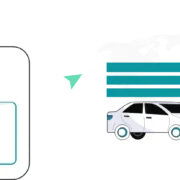Introduction
When it comes to vehicle safety and emissions compliance in the state of Maryland, an annual or semi-annual inspection is not just a requirement but also a crucial step in ensuring road safety and environmental responsibility. The Maryland State Inspection is a comprehensive examination of your vehicle’s various components to ensure they meet the state’s safety and emissions standards. In this article, we will delve into the details of this inspection process, its significance, and what you can expect if your vehicle doesn’t pass muster.
The Purpose of Maryland State Inspection
The Maryland State Inspection is designed with two primary objectives in mind: safety and environmental responsibility. Let’s take a closer look at each of these aspects:
1. Ensuring Safety
The foremost goal of the Maryland State Inspection is to ensure that all vehicles on the road are safe to operate. During the inspection, certified technicians meticulously examine various components of your vehicle, including brakes, tires, lights, steering, suspension, and more. The aim is to identify any issues or defects that could compromise the safety of the driver, passengers, and others sharing the road.
This rigorous safety inspection helps prevent accidents and breakdowns caused by faulty equipment. It also contributes to reducing the risk of injuries and fatalities on Maryland’s roadways. In essence, it serves as a protective measure for all road users, including you and your loved ones.
2. Emissions Compliance
In addition to safety, the Maryland State Inspection also focuses on emissions compliance. Vehicles are responsible for a significant portion of air pollution, which can have adverse effects on the environment and public health. To combat this, Maryland has stringent emissions standards that vehicles must meet.
During the inspection, technicians check the emissions system of your vehicle to ensure it meets these standards. If your vehicle emits excessive pollutants, it not only harms the environment but can also lead to penalties for non-compliance. By enforcing emissions regulations, the state aims to reduce its ecological footprint and improve air quality for all residents.
What Happens During the Inspection?
Now that we understand the purpose of the Maryland State Inspection, let’s delve into what happens during the inspection process itself:
- Visual Inspection: Technicians start with a visual inspection, examining the exterior of your vehicle for any damage, visible defects, or missing components.
- Safety Checks: The safety inspection covers critical components such as brakes, tires, lights, steering, and suspension. Technicians look for signs of wear and tear, proper functionality, and any issues that could compromise safety.
- Emissions Testing: Emissions compliance is assessed through various tests, including the On-Board Diagnostic (OBD) test, which checks your vehicle’s computer system for emissions-related issues. Additionally, a tailpipe emissions test may be conducted to measure the pollutants your vehicle emits.
- Documentation Review: Technicians also review your vehicle’s documentation, including the title, registration, and vehicle identification number (VIN), to ensure everything is in order.
What If Your Vehicle Doesn’t Pass?
If your vehicle doesn’t pass the Maryland State Inspection, don’t panic. It’s not uncommon for vehicles to require some maintenance or repairs to meet the state’s standards. When this happens, you’ll receive a Vehicle Inspection Report (VIR) that details the issues identified during the inspection.
Here’s what you should do if your vehicle doesn’t pass:
- Review the VIR: Carefully go through the VIR to understand the specific issues that need attention. The report will outline which components failed the inspection.
- Repairs and Maintenance: You have the option to choose where you want to have the necessary repairs and maintenance performed. You can either take your vehicle to a licensed repair facility or choose to have the repairs done by the inspection station that conducted the initial inspection.
- Reinspection: Once the repairs are completed, you’ll need to schedule a reinspection at the same inspection station. They will verify that the necessary repairs have been made and that your vehicle now meets the required standards.
- Compliance and Peace of Mind: Once your vehicle passes the reinspection, you’ll receive a new certificate, indicating that your vehicle complies with Maryland’s safety and emissions standards. This certificate is essential for renewing your vehicle’s registration.
Conclusion
The Maryland State Inspection is a critical process that ensures the safety of vehicles on the road and promotes environmental responsibility. By adhering to the state’s stringent standards for safety and emissions, Maryland residents contribute to safer roads and cleaner air.
If your vehicle doesn’t pass the inspection initially, it’s not a cause for alarm. With the proper repairs and maintenance, your vehicle can meet the required standards, ensuring your safety and compliance with state regulations. So, when it’s time for your annual or semi-annual inspection, remember that it’s not just a legal requirement—it’s a step toward a safer and more environmentally responsible Maryland.























Comments